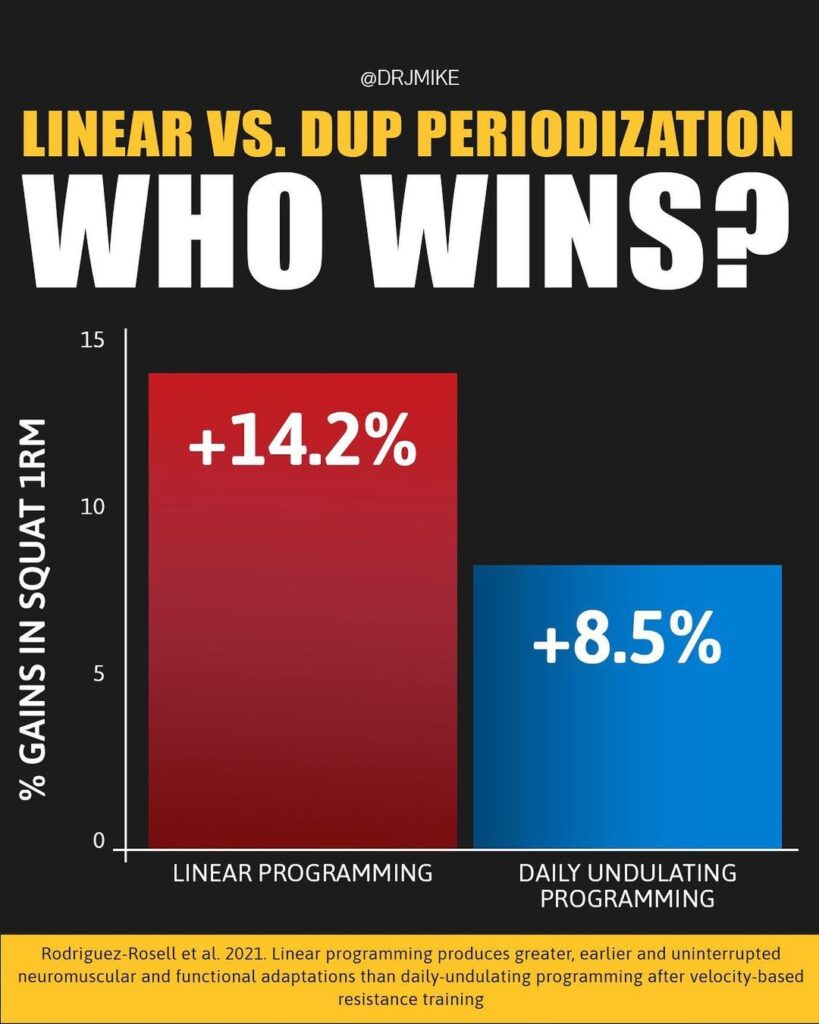
Training Programming- Linear Vs. Dup Periodization- Who Wins?!
by Dr. Jonathan Mike
A lot of people out there love Periodization! Of course linear and DUP (daily undulating) have been around for decades and in the early 2000s DUP/non-linear was thought to be more superior because you could change set, and reps schemes & incorporate within week variations & and add within week recovery. Undulating periodization (also referred to as Non-Linear Periodization) involves varying the stimulus on a daily (DUP) or weekly (WUP) basis.
.
STUDY SHOWS: This newer study compared two different 8 week Periodization program strategies with trained males examining changes in 1RM squat, velocity/load profiles and muscular endurance. Both groups assigned loads via velocity base training at 50 to 80% of 1RM throughout the study and stopped each set at 15% velocity loss and were both matched both average in peak intensity.
.
The results showed significant differences in favor of the LINEAR programming group with 1RM squat. velocity at given loads and sub-max muscular endurance but no significant difference in countermovement jump between groups.
.
HERE’s THE REALITY: It’s pretty difficult to detect massive differences between these two groups when doing similar training programs. In Other words it’s a limited amount of time. Second, most people fail to realize is that ALL types of Periodization work. They are ALL linear over time and should be. Unfortunately the vast majority of research is comparing linear, DUP/nonlinear. There’s little Scientific research (peer-review scientific journals) on the other different and OTHER types (comparatively) such as CONJUGATE or Block style (aside from anecdotal, traditional textbook and lay articles) and that have been modified for certain sports. I am personally more of a Conjugate style fan because you can maximize & utilize a combination of all other Periodization methods.
.
Take-home message: The truth is that not a single type is the best and they all work for different types of people and have benefits.
.
.





